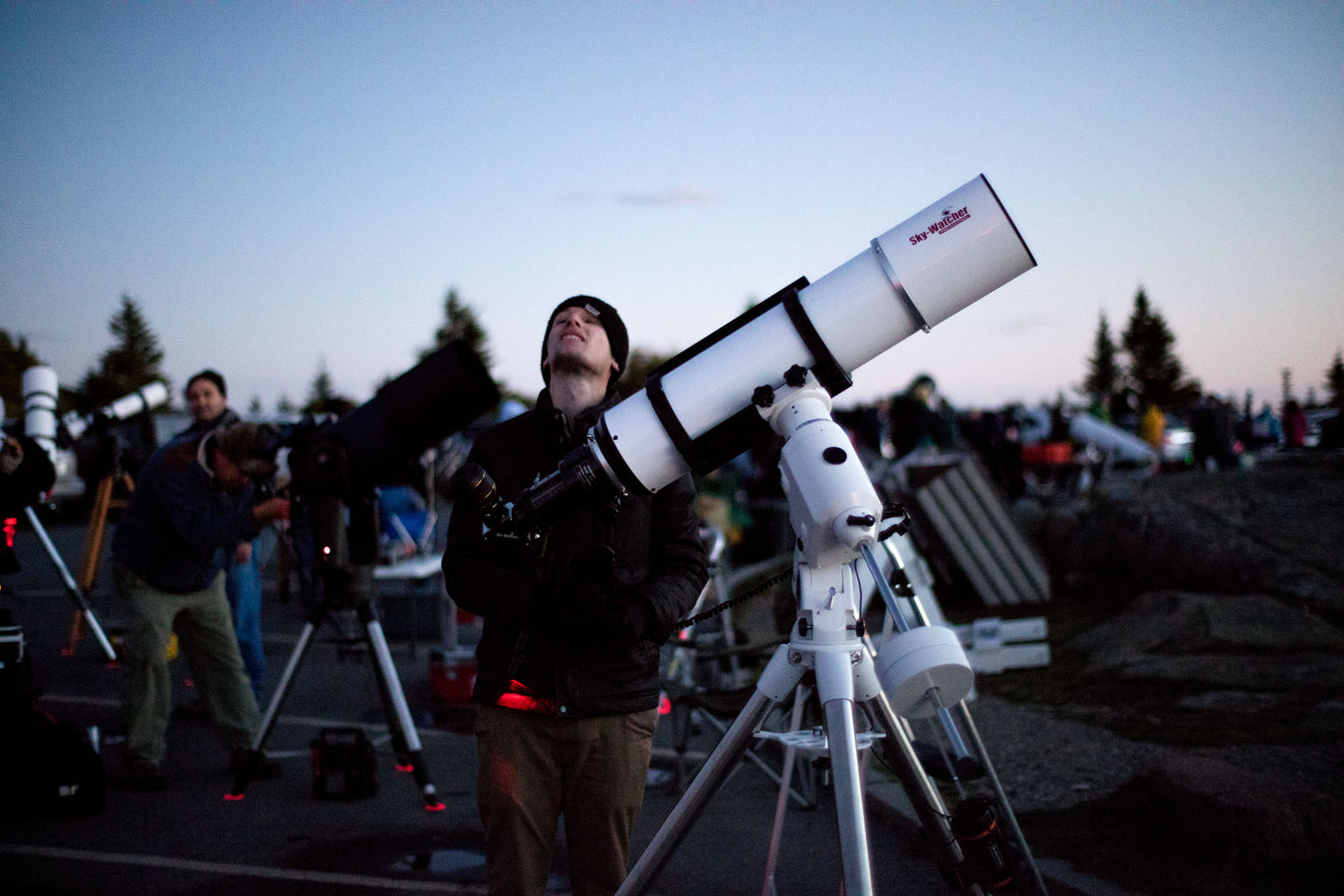
Selecting the Right Telescope Setup
Welcome to the new Sky-Watcher USA blog! Over the coming months, we plan to fill this with telescope-related tutorials, advice, inspiration and reviews to help you get the most out of your night skies. In this first installment, we'd like to visit the different types of telescope rigs for different types of astronomers. Enjoy!
It seems as if nearly every day we hear from astronomers who want to build a new astrophotography rig from the ground up. This is a tough thing to answer because not every astronomer has the same needs. Some want to build a massive observatory in their backyard while others are looking for a travel kit to take on the road.
It’s important to understand that everyone has a different journey with astrophotography. Rigs don’t come together overnight, and it’s incredibly important to add each component one at a time. Buying everything all at once is discouraged because it doesn’t allow you the time to learn how to use each component. Should you run into problems with your rig, it’s easier to diagnose once you’ve had a chance to individually learn the mount, the optical tube, and all your imaging accessories. To me, seeing the steady progress of slowly seeing your telescope come together is the most rewarding part of this hobby.
In this blog post, we’re going to give a few suggestions for telescope rigs based on different types of astronomers. Keep in mind every astronomer is different and astrophotography rigs are subjective.
The Astronomer on the Go
- EvoStar 72
- Star Adventurer Astro Kit
- Sony Mirrorless Camera
This setup is designed for the astrophotographer on the go. Whether you live out of a van or just like to travel light, this rig delivers shockingly good images. The EvoStar 72 is one of our newest optical tubes. It’s also the lightest weight OTA we manufacture. The Star Adventurer does not have computerized Go To but with a payload capacity of 10lbs, it can easily accommodate the optical tube and camera.
Any lightweight DSLR will work with this setup, but we’re recommending the Sony for this setup because of their fantastic low light capabilities and lightweight construction.

The Newbie Astrophotographer
- EvoStar 100
- AZ-EQ5
- Canon DSLR
This is our recommended setup for those looking to plunge into astrophotography, but don’t have any prior experience with astronomy. EQ mounts are often too difficult for new astronomers to pick up, often purchasing easier AZ mounts, but most beginners don’t want to buy two separate mounts.
Fortunately beginning astrophotographers no longer have to choose between AZ or EQ, thanks to Sky-Watcher hybrid mount, the AZ-EQ5. The mount can align in either mode, allowing beginning astronomers to start their astrophotography journey with the easier AZ mode before bridging to EQ mode after gaining more experience in aligning a mount.
Canon DSLRs are the industry standard of entry-level astrophotography cameras due to their low-light capabilities. Shooting with a DSLR doesn’t require a laptop like a CCD camera, and it’s ability to shoot one shot color makes post-processing a breeze.

The Polished Veteran
- Esprit 100 APO Triplet
- Sky-Watcher EQ6-R
- Evoguide 50
- Starlight Xpress Trius 694
- Starlight Xpress filter wheel (Mono)
The Sky-Watcher EQ6-R sets the standard for medium build, computerized Equatorial mount in the telescope industry. Utilizing belt driver stepper motors, this mount is whisper quiet
When picking out a CCD camera, the general rule of thumb is 2 arc seconds per pixel. When paired with the Esprit 100, the Starlight Xpress Trius 694 provides 1.7 arc seconds per pixel, delivering above average resolution under any seeing conditions. Boasting a new Sony sensor with 75% quantum efficiency, the 694 delivers unmatched low-light performance with incredibly low noise.
The Trius 694 is available in both one-shot color and monochrome. We’ll save the pros/cons of shooting with a monochrome camera for another post, but if you shoot with the monochrome, the Starlight Xpress 694 Filter Wheel perfectly pairs with the camera & Esprit 100 without the need for any custom built spacers or adapters.

The Guy Who Has To Have It All
- Esprit 150 APO Triplet
- Sky-Watcher EQ8
- Starlight Loadstar X2
- Starlight Maxi-Wheel filter system & OAG
- Starlight Xpress Trius SX-56
Let’s say you win the lottery and you’ve got $25,000 to spend on a telescope setup. This would be it. Having the massive EQ8 allows you to mount just about anything your heart desires. Want to mount two APO Triplet refractors? Go ahead! Piggyback a large format camera? No problem! With a payload capacity of 110lbs, you can mount everything and the kitchen sink.
